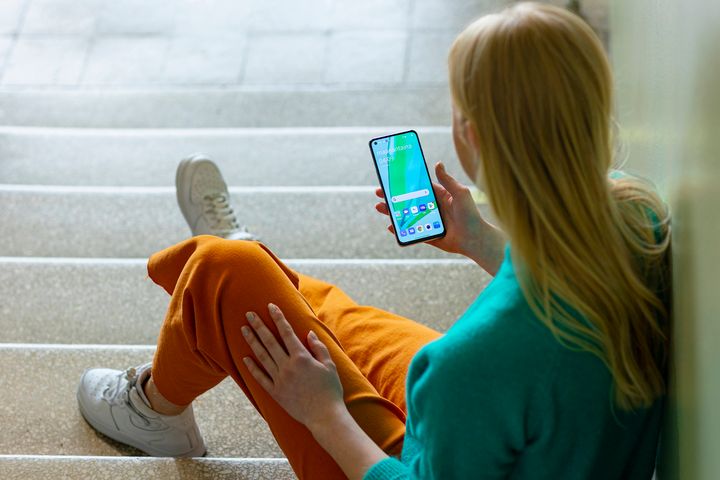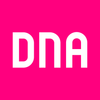The mobile phone ban in schools can be seen in the mobile network: Data usage has decreased significantly in some areas, but school-specific variation is huge
Since August 2025, a law-based mobile phone ban has been in effect during primary school lessons in Finland. Students are prohibited from using mobile devices during lessons without the teacher’s permission, and even then, only for educational or healthcare-related purposes. A comparison conducted by DNA on the amount of data passing through mobile base stations serving schools indicates that mobile phone use in schools has generally decreased – in some school areas even significantly.

A law-based mobile phone ban came into effect this school year in Finland, aiming to improve classroom peace and students’ focus on learning. In addition to lessons, schools have been able to define in their rules how devices are stored during the school day and restrict their use during breaks and lunch periods. Practices vary widely between cities and schools. Also, mobile restriction levels that schools had before the new law, have significant school-specific differences.
DNA compared the amount of data transferred in its mobile network near schools between April–May and August–September 2025. The comparison covered areas around several dozen schools across Finland. It shows that the amount of transferred data typically decreased by 10–20 percent, but in some areas by as much as 50–70 percent due to the mobile phone ban.
“For example, in the area of Saunalahti School in Espoo, the amount of mobile data transferred this autumn has dropped to just one-third of the amount transferred last spring. Similarly, near the Olarinniityntie property of Olari School in Espoo, the amount has halved. Saunalahti School serves grades 1–9, while Olarinniityntie serves grades 5–9, meaning the latter has slightly older students. This may explain the differences,” estimates Jarkko Laari, VP, Networks at DNA.
Large differences between schools in data reduction
Although mobile data usage has dropped significantly in many school areas, the differences between schools are substantial. In many areas, the decrease between last spring and this autumn is only 0–20 percent. In addition to student age distribution, the variation may be explained by how schools restricted phone use already last spring or how broadly the ban has been implemented this autumn.
“Some schools already had extensive restrictions in place, so the impact of the law changes this autumn has been minimal. On the other hand, some schools have banned phones entirely during breaks and lunch periods since August, while others still allow them outside of lessons. It’s worth noting that in nearly every school area examined, average mobile data consumption has not increased since last spring, even though data usage is generally trending upward across Finland. In DNA subscriptions, monthly mobile data usage per connection has increased from 5.9 GB to nearly 59 GB over the past 10 years,” Laari says.
During the review period, the total decrease in mobile data ranged from 0–20 percent in, for example, areas of Vesala School and Maunula School in Helsinki, Aurinkokivi School in Vantaa, Kaarila School in Tampere, Luostarivuori School in Turku, Minna Canth School in Kuopio, Merenkurkku School in Vaasa, Napapiiri School in Rovaniemi, and Kalevankangas School in Mikkeli.
Significant drops of 20–70 percent were observed in, for example, areas of Saunalahti and Olari Schools (Olarinniityntie property) in Espoo, Länsimäki School in Vantaa, Salpausselkä, Kivimaa and Kärpänen Schools in Lahti, Hämeenlinna Lyceum School, Seinäjoki Lyceum, Pataluoto School in Joensuu, Laanila School in Oulu, and Kajaani Lyceum.
DNA does not recommend smartphones for the youngest students
When discussing students’ phone use, it’s important to remember that adult presence is more important than age limits. Even children without their own smart devices are exposed to various content through their friends’ devices. If a friend already has a smartphone, those without one will still get to use it.
“The situation is comparable to learning traffic skills: first you practice with an adult, identifying danger zones, safe crossing points, and rules together,” Laari notes.
Adults must remember that no technology or safety settings fully protect children online. Many mistakenly believe that digital-native youth automatically know how to navigate digital environments. However, device fluency does not equate to advanced media literacy, which is essential for handling content. These skills vary greatly among young people. Talking with adults can help level out differences in starting points.
Regarding age, DNA has stated that it does not recommend smartphones for first and second graders. At that age, children’s sociocognitive abilities are not yet sufficient for safe internet use. If a device is needed for communication, a properly set-up watch phone is a safer option than a smartphone.
How the mobile data comparison was conducted
DNA conducted the comparison by first selecting technically suitable schools across Finland. Technical suitability required a sufficiently large school and a clearly dedicated base station serving that school. These criteria are necessary because data usage from very small schools cannot be reliably identified from the total data of a base station serving the area. The same issue arises when a single base station serves a much broader area than just the school.
Next, DNA examined the mobile base stations primarily serving the selected schools and the amount of data transferred through them. Since base stations always serve a wider area than just the school, the data includes usage from other nearby users. This background data not related to the school was subtracted from the total data used in the comparison, as far as possible. The amount of subtracted background data is based on data volumes during weekends and the summer holiday period of 2025, when school buildings were used the least.
The comparison was made between April–May and August–September 2025. All data examined is fully anonymous. DNA only compared the total amount of data transferred through selected base stations. The analysis focused solely on mobile data transferred via DNA subscriptions. It was not possible to identify individual network users. The comparison was conducted with daily total transfer volumes.
The results are indicative at best, which is why precise school-specific changes in mobile data volumes are not publicly reported. The reported changes are based on the assumption that significant differences in data volumes between the comparison periods are mainly due to reduced mobile data usage by school building users. This assumption is supported by the clear drop in mobile data transferred via selected base stations during summer holidays and weekends, when school usage was significantly lower than on weekdays.
The comparison included base stations serving schools that met the criteria in Finland’s 20 largest municipalities: Helsinki, Espoo, Tampere, Vantaa, Oulu, Turku, Jyväskylä, Kuopio, Lahti, Pori, Joensuu, Kouvola, Lappeenranta, Vaasa, Hämeenlinna, Seinäjoki, Rovaniemi, Porvoo, Mikkeli, and Salo.
Media enquiries:
Jarkko Laari, VP, Networks, DNA Plc, tel. +358 (0)44 044 4949, jarkko.laari@dna.fi
DNA Corporate Communications, tel. +358 (0)44 044 8000, communications@dna.fi
Images
DNA is one of the leading telecommunications companies in Finland. Our purpose is to connect you to what matters most. We offer connections, services and devices for homes and workplaces, contributing to the digitalisation of society. Already for years, DNA customers have been among the world leaders in mobile data usage. DNA has about 3.7 million subscriptions in its fixed and mobile communications networks. The company has been awarded numerous times as an excellent employer and family-friendly workplace. In 2024, our total revenue was EUR 1,100 million and we employ about 1,600 people around Finland. DNA is a part of Telenor Group, a leading telecommunications company across the Nordics. More information: www.dna.fi, Facebook @DNA.fi, Instagram and Threads @dna_fi and LinkedIn @DNA-Oyj.
Alternative languages
Subscribe to releases from DNA Oyj
Subscribe to all the latest releases from DNA Oyj by registering your e-mail address below. You can unsubscribe at any time.
Latest releases from DNA Oyj
DNA ja KAJ yllättivät ikonisella musiikkiesityksellä Sibelius-monumentilla – katso tallenne8.12.2025 11:23:34 EET | Tiedote
Suomalaisen musiikin päivän ja Jean Sibeliuksen syntymäpäivän kunniaksi Helsingin Töölössä Sibelius-monumentin äärellä koettiin tänä aamuna 8.12. ainutlaatuinen ja näyttävä esiintyminen. Suosittu KAJ-yhtye esitti yllätyksenä oman, vaikuttavan tulkintansa suomalaisten rakastamasta Finlandia-hymnistä yhdessä Vaskivuoren lukion 35-henkisen kamarikuoron kanssa. Version tuottajana toimi Jean Sibeliuksen tyttärentyttärenpoika.
DNA and KAJ surprised with an iconic musical performance at the Sibelius Monument – Watch the recording8.12.2025 11:23:34 EET | Press release
To celebrate Finnish Music Day and Jean Sibelius’s birthday, an extraordinary and visually striking performance took place this morning, December 8, at the Sibelius Monument in Töölö, Helsinki. The popular band KAJ delivered a surprise rendition of the beloved Finlandia hymn together with the 35-member chamber choir from Vaskivuori Upper Secondary School. The version was produced by Jean Sibelius’s great-grandson.
DNA:n marraskuun 2025 myydyimmät puhelimet ja älykellot1.12.2025 08:00:00 EET | Tiedote
Black Friday ja siihen liittyvät tarjoukset korostuivat DNA:n marraskuun myydyimpien puhelinten listalla. Ostetuimpia laitteita olivat Applen iPhonet sekä Samsungin Galaxy-puhelimet. Kuluttaja-asiakkaissa Applen iPhone 15 5G nappasi ykköspaikan, kun taas iPhone 17 Pro Max 5G nousi yritysasiakkaiden marraskuun myyntilistan kirkkaimmalle sijalle. Älykellojen osalta kysytyimpiä olivat Honorin ja Samsungin edulliset mallit ja myydyimpänä älykellona paikkansa säilytti edelleen Honor Choice Watch 2i.
DNA:n jättitilasto: Näin eri ikäryhmät 50 suurimmassa kunnassa käyttävät kännykkää20.11.2025 10:30:00 EET | Tiedote
Suomalaiset kuluttavat mobiilidataa ennätysmäärin, ja esimerkiksi nuorten kännykkänetin keskikäyttö riittää jo tuntien videokatseluun päivittäin. DNA:n vertailu 50 suurimman kunnan välillä tammi–lokakuussa 2025 paljastaa yllättäviäkin eroja kuntien ja ikäryhmien välillä puhelimilla käytetyissä datamäärissä. Keskimääräisesti ykkösenä on Rovaniemi. Katso jättitilasto tiedotteen lopusta.
DNA’s Statistics: How Different Age Groups in Finland’s 50 Largest Municipalities Use Mobile Phones20.11.2025 10:30:00 EET | Press release
Finns consume mobile data at record levels, and for example, the average mobile internet use among young people already allows for hours of video viewing daily. DNA’s comparison of the 50 largest municipalities between January and October 2025 reveals surprising differences between municipalities and age groups in the amount of data used on phones. On average, Rovaniemi tops the list. Check the full statistics at the end of the release.
In our pressroom you can read all our latest releases, find our press contacts, images, documents and other relevant information about us.
Visit our pressroom

